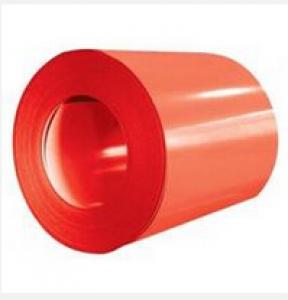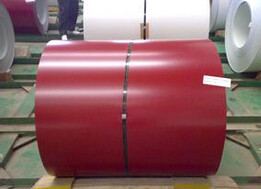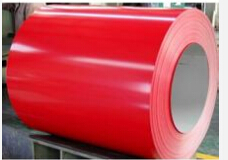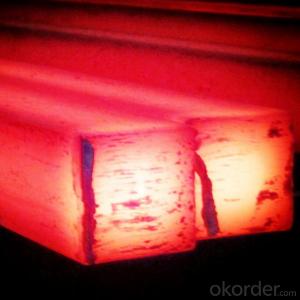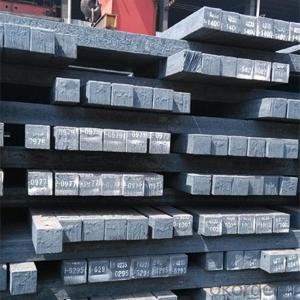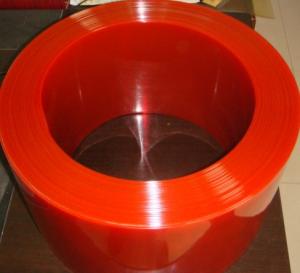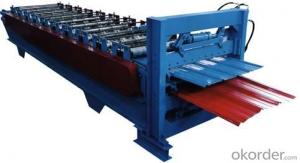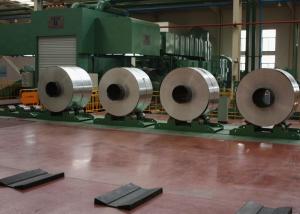Bright Red PPGI Sheet
- Loading Port:
- China Main Port
- Payment Terms:
- TT OR LC
- Min Order Qty:
- -
- Supply Capability:
- -
OKorder Service Pledge
OKorder Financial Service
You Might Also Like
Specification
1. Thickness: 0.3-0.8mm
2. Width: 914-1250mm
3. Inner Diameter: 508mm
4. Weight of Steel Coil: 3-15MT
5. Available Dipped Layer: 50-150g/m2
6. Surface Texture: Normal Coated
7. Type of coating structure: 2/1 Coat the top surface of the steel sheet twice, coat the bottom surface once, and bake the sheet twice.
8. Front Side Paint Thickness: 15-25μm (bottom paint+top paint)
9. Back Side Paint Thickness: 5-10μm
Mechanical Properties
1. Mechanical properties of base metals
Grade | Tensile Test | ||
Yield Strength MPa | Tensile Strength MPa | Elongation A80mm % ≥ | |
SGCC | 140-350 | 270-500 | 22 |
SGCD | 140-300 | 270-420 | 26 |
SGCE | 140-260 | 270-380 | 30 |
2. Common performance of front coating
(1). Thickness: ≥20μm
(2). Pencil Hardness: 2H
(3). 60° specular glossiness of coating: >60
(4). 180°bend: ≤3T
(5). Impact: ≥9J
(6). Salt Fog Resistant: ≥500h
(7). Color difference: <3ΔE
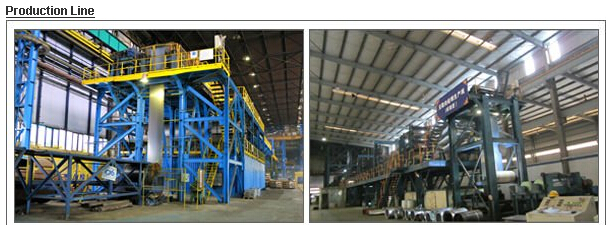
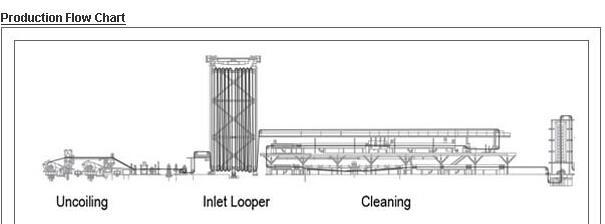
- Q: How is steel used in the production of tools and hardware?
- Steel is commonly used in the production of tools and hardware due to its high strength and durability. It is used to make various components such as blades, wrenches, hammers, and screws, providing them with the necessary toughness to withstand heavy usage and resist wear and tear. Steel's versatility allows it to be shaped into different forms, enabling the creation of tools with precise dimensions and intricate designs. Additionally, steel can be hardened and tempered to enhance its performance, making it an ideal material for manufacturing reliable and long-lasting tools and hardware.
- Q: What are the applications of steel forgings in aerospace?
- Steel forgings have a wide range of applications in the aerospace industry. They are commonly used for critical components that require high strength, durability, and resistance to extreme temperatures. Some applications include aircraft engine components, landing gear, structural components, and wing attachments. Steel forgings offer superior mechanical properties and reliability, ensuring the safety and performance of aerospace systems.
- Q: What are the common uses of steel in the aerospace industry?
- Steel is commonly used in the aerospace industry for various applications such as aircraft structures, engine components, landing gears, and fasteners. Its high strength-to-weight ratio, durability, and resistance to extreme temperatures make it ideal for ensuring safety and performance in aircraft design.
- Q: How does the thickness of steel affect its strength?
- The thickness of steel directly affects its strength. Generally, thicker steel tends to be stronger and more resistant to deformation or failure under load. This is because thicker steel has a greater cross-sectional area, which allows it to distribute and withstand forces more effectively. Thicker steel also provides a larger volume for the material to absorb energy before reaching its breaking point. However, it is important to note that there is a trade-off between thickness and other factors such as weight and cost, so the optimal thickness depends on the specific application and requirements.
- Q: How is steel used in the aerospace industry?
- Steel is used in the aerospace industry for various purposes, including the construction of aircraft structures, engine components, and landing gears. Its high strength-to-weight ratio and excellent durability make it suitable for withstanding extreme conditions and ensuring the safety and reliability of aerospace vehicles.
- Q: How is steel used in the manufacturing of textile materials?
- Steel is used in the manufacturing of textile materials primarily in the form of machinery and equipment used in the production process. Steel components such as machine frames, needles, and hooks are essential for the smooth operation of textile manufacturing machines, ensuring precise fabric weaving, knitting, and cutting. Additionally, steel is used in the construction of textile factory buildings, providing structural support and stability.
- Q: How is steel used in the manufacturing of machinery and equipment?
- Steel is commonly used in the manufacturing of machinery and equipment due to its strength, durability, and versatility. It is used to fabricate various components, such as frames, shafts, gears, and casings, that require high strength and resistance to wear and tear. Additionally, steel's malleability allows for easy shaping and forming, making it suitable for complex machinery designs. Its ability to withstand extreme temperatures and pressures further enhances its utility in the manufacturing process.
- Q: What are the properties of corrosion-resistant steel for marine applications?
- Corrosion-resistant steel for marine applications possesses several key properties. Firstly, it has a high resistance to corrosion, which is crucial when exposed to the harsh and corrosive marine environment. Additionally, it offers excellent strength and durability, ensuring long-term performance even in challenging conditions. It is also often designed to withstand pitting, crevice corrosion, and stress corrosion cracking, which are common issues in marine environments. Furthermore, corrosion-resistant steel for marine applications usually has good weldability, allowing for easy fabrication and maintenance. Overall, these properties make it a reliable and cost-effective choice for various marine structures and equipment.
- Q: How is steel used in the construction of data centers?
- Steel is used in the construction of data centers for its structural strength and durability. It is commonly used in the framework and supports of the building to ensure stability and resistance against earthquakes and other forces. Steel also provides a secure environment for housing servers and other sensitive equipment, protecting them from external threats.
- Q: What are the different types of steel wire ropes and their uses in marine applications?
- There are various types of steel wire ropes used in marine applications. Some common ones include galvanized steel wire ropes, stainless steel wire ropes, and PVC-coated steel wire ropes. Galvanized steel wire ropes are coated with zinc to protect against corrosion and are commonly used for general marine applications such as mooring lines, towing, and rigging. Stainless steel wire ropes, on the other hand, are highly resistant to corrosion and are often utilized in marine environments with high exposure to saltwater, such as for yacht rigging, fishing nets, and architectural elements on boats. PVC-coated steel wire ropes provide an additional layer of protection against corrosion and are suitable for applications where abrasion resistance is required, such as in winches, cranes, and lifting equipment used in marine settings. Overall, the choice of steel wire rope in marine applications depends on factors like the level of corrosion resistance needed, the specific application requirements, and the environmental conditions it will be exposed to.
Send your message to us
Bright Red PPGI Sheet
- Loading Port:
- China Main Port
- Payment Terms:
- TT OR LC
- Min Order Qty:
- -
- Supply Capability:
- -
OKorder Service Pledge
OKorder Financial Service
Similar products
Hot products
Hot Searches
Related keywords
